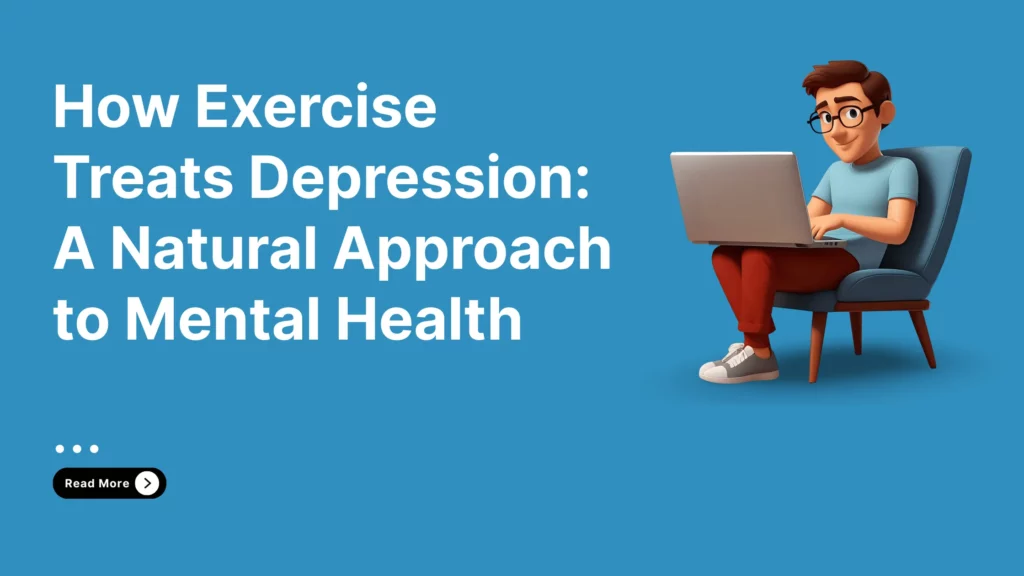
Address
440 West Street, Suite 318 Fort Lee, NJ 07024
Contact
Hours
Mon - Fri: 9am - 9pm Sat - Sun: Closed

In the search for relief from depression, people often turn to medication, therapy, or lifestyle changes. While each of these plays a crucial role in treatment, one powerful, evidence-based strategy often goes underappreciated: exercise. From walking and swimming to strength training and dance, physical activity can significantly improve mental health and reduce depressive symptoms, and for many, it’s not just a complementary tool, it can be a foundational part of their recovery. But for some, the standard treatments don’t work, which is what’s called “resistant depression”, which is why new depression medication comes out all the time.
This article explores how exercise affects the brain, its effectiveness compared to traditional treatments, and how to incorporate movement into a sustainable wellness plan, especially for those seeking natural or non-pharmacological approaches to depression.
Exercise is more than a mood booster, it actively alters brain function. When you engage in physical activity, your body releases endorphins, often referred to as “feel-good” hormones. But the benefits go deeper.
Exercise also:
These effects are similar to how certain antidepressants work, which is why some researchers are now comparing regular exercise to a new depression medication, only without the side effects or dependency risks.
Not everyone can or wants to rely on pharmaceutical solutions. For individuals hesitant to start medication, or those looking to reduce reliance on it, exercise offers a compelling alternative.
In mild to moderate cases, consistent physical activity has been shown to rival the effects of SSRIs and other antidepressants. And for individuals already on a medication for depression and anxiety, adding movement can amplify results and reduce the likelihood of relapse.
That said, exercise is not a one-size-fits-all cure. For those with severe depression or suicidal ideation, medical intervention is often necessary. But even then, movement remains a helpful adjunctive therapy that enhances mood, boosts energy, and restores a sense of control.
What makes exercise particularly powerful for depression is its ability to target multiple dimensions of well-being at once. While medication typically works on brain chemistry alone, physical activity influences mood, energy, and self-perception through a combination of physiological and psychological pathways.
Regular movement not only boosts neurotransmitters but also improves sleep quality, enhances focus, and builds resilience against daily stressors. For many individuals, this holistic effect helps bridge the gap between traditional therapy and daily self-care, making exercise a sustainable and empowering tool for mental health recovery.
As the mental health field evolves, more providers are viewing exercise as a legitimate form of treatment. In fact, doctors in several countries now issue formal prescriptions for physical activity as part of comprehensive care.
This approach is particularly useful for patients who are wary of starting medications for mental health or who struggle with side effects. Unlike pharmaceuticals, exercise has positive side benefits, like weight management, improved cardiovascular health, better sleep, and increased self-confidence.
To maximize mental health outcomes, experts recommend:
Even short bursts of movement, like a 10-minute walk, can make a noticeable difference in mood and motivation. At Gimel Health, a board-certified psychiatrist encourages patients to integrate lifestyle-based strategies like exercise into their treatment plans, supporting both physical wellness and long-term emotional resilience.
Exercise doesn’t just change your body, it changes how you relate to yourself. Movement builds resilience, strengthens mind-body awareness, and offers an outlet for processing emotions without words.
For many, the act of choosing movement becomes symbolic: “I’m not giving up on myself.”
Whether it’s a slow walk around the block, a gentle yoga session, or a high-energy kickboxing class, movement offers a powerful reminder that change is possible, and that depression doesn’t have the final say.
If you’re ready to integrate exercise into your mental health plan, here are some tips for long-term success:
When paired with clinical care, exercise becomes part of a comprehensive strategy, helping to stabilize mood, prevent relapse, and improve overall quality of life.
Exercise may not replace therapy or medication entirely, but for many people, it plays a powerful role in recovery from depression. As science continues to support its effectiveness, more mental health professionals are embracing movement as a core component of treatment.
Whether you’re taking your first step or lacing up for your hundredth walk, know this: each moment of movement is an act of healing. It’s a signal to your body and mind that you’re moving toward balance, strength, and hope. Learn more here about what options are available for you.






Schedule a consultation! Provide your contact information below and we’ll get back to you as soon as we can.
440 West Street, Suite 318 Fort Lee, NJ 07024
Mon - Fri: 9am - 9pm Sat - Sun: Closed
HWS Center © 2025 | All rights reserved | For Ketamine Treatment NJ | Created by Invisio Solutions Ltd